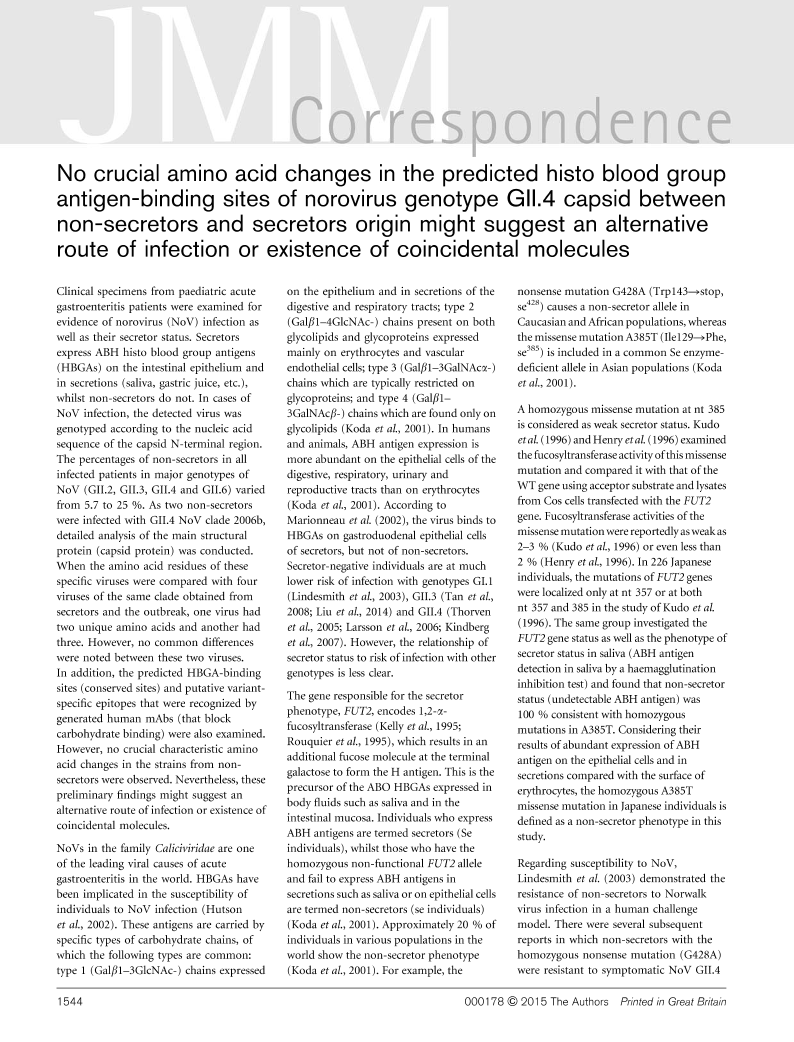
Full text loading...

No crucial amino acid changes in the predicted histo blood group antigen-binding sites of norovirus genotype GII.4 capsid between non-secretors and secretors origin might suggest an alternative route of infection or existence of coincidental molecules, Page 1 of 1
< Previous page | Next page > /docserver/preview/fulltext/jmm/64/12/1544_jmm000178-1.gif
There is no abstract available.

Article metrics loading...

Full text loading...
References


Data & Media loading...
Supplements
